Refund Guaranteed

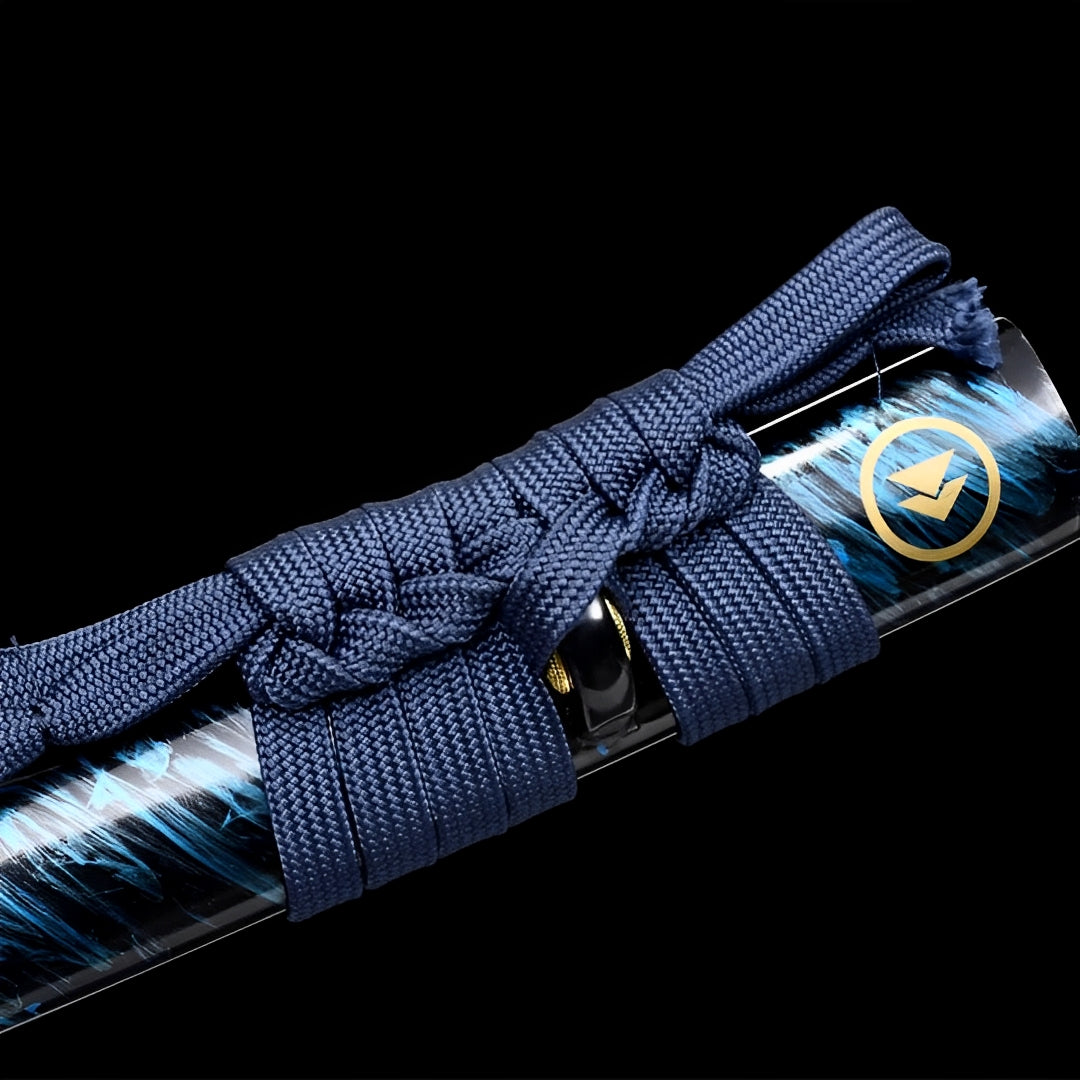
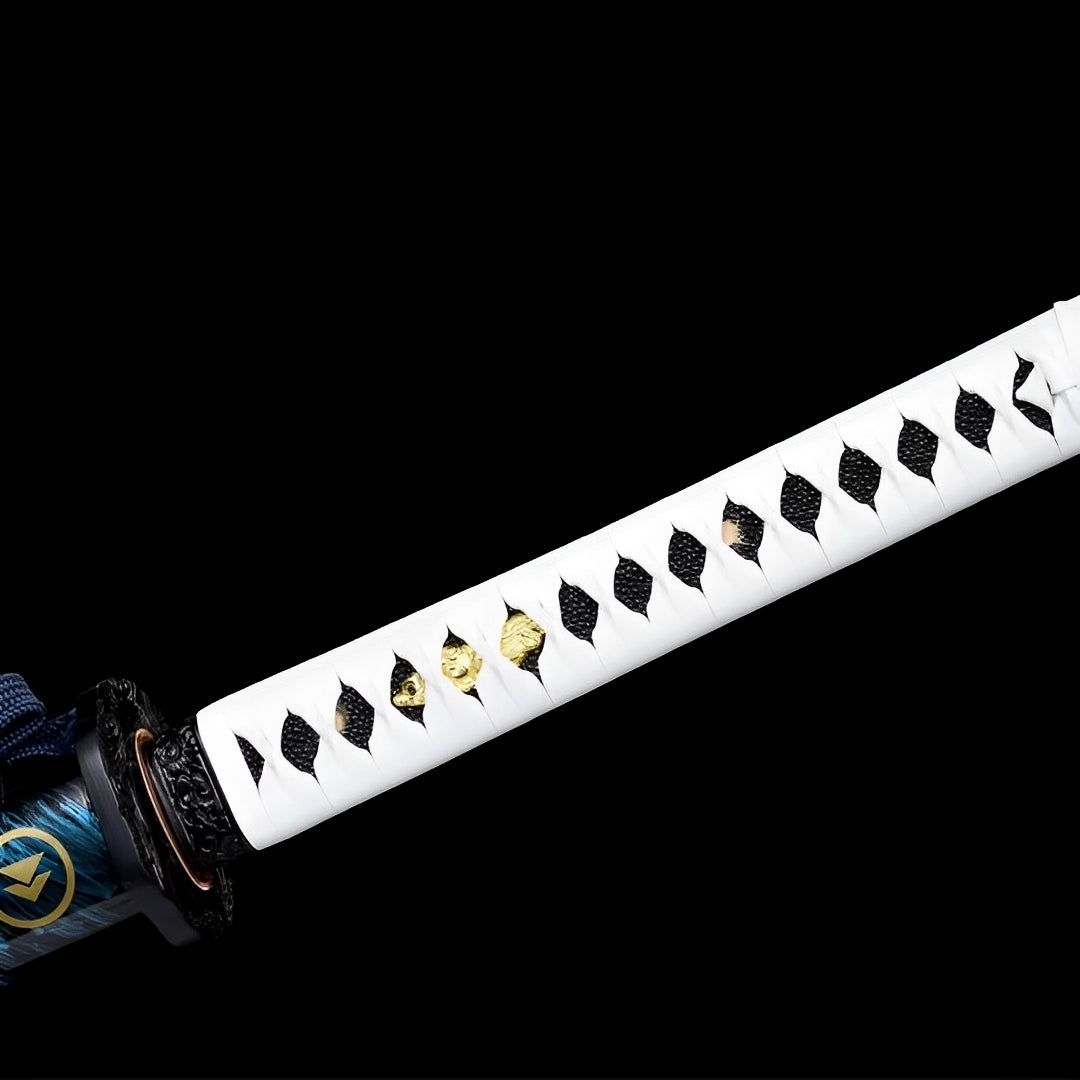
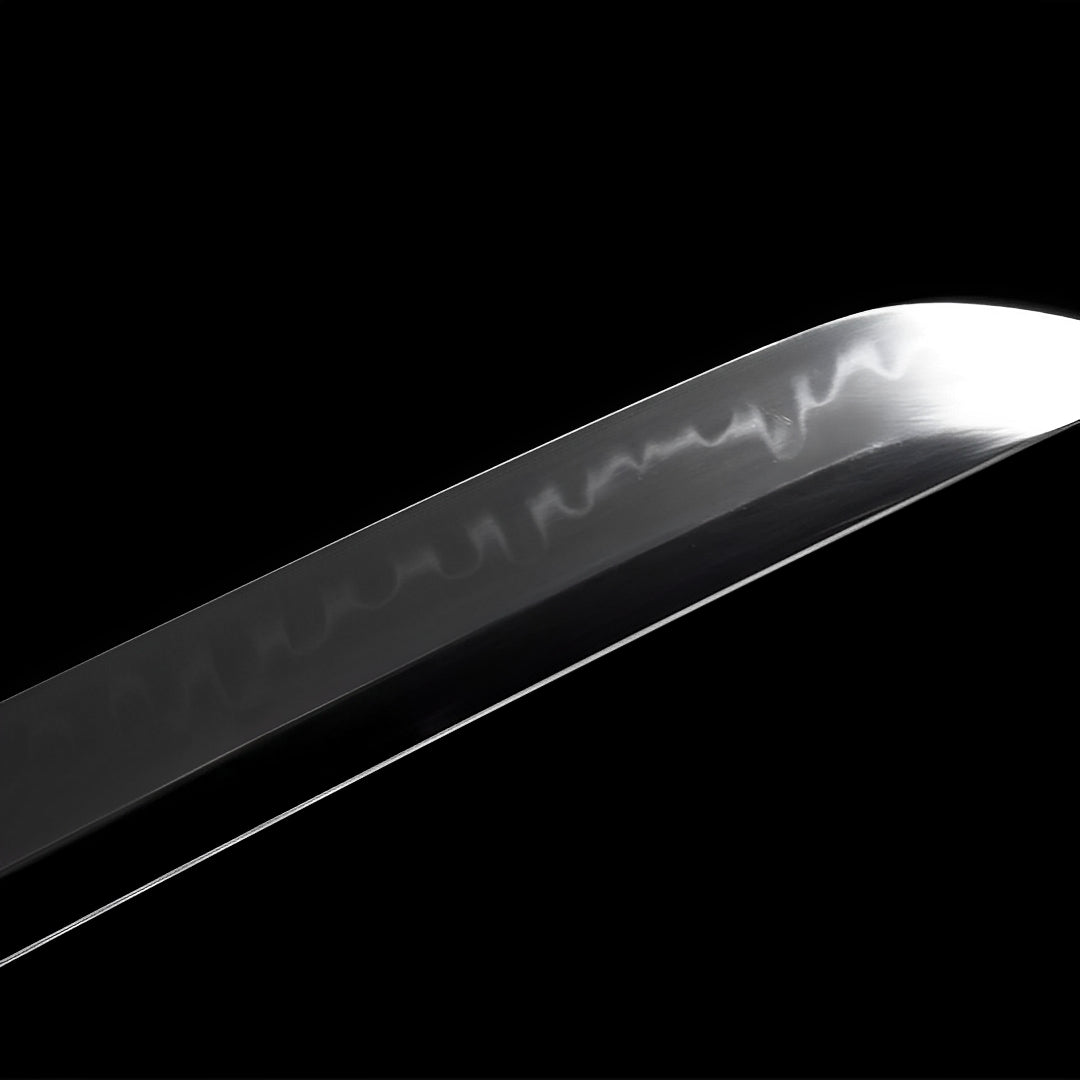
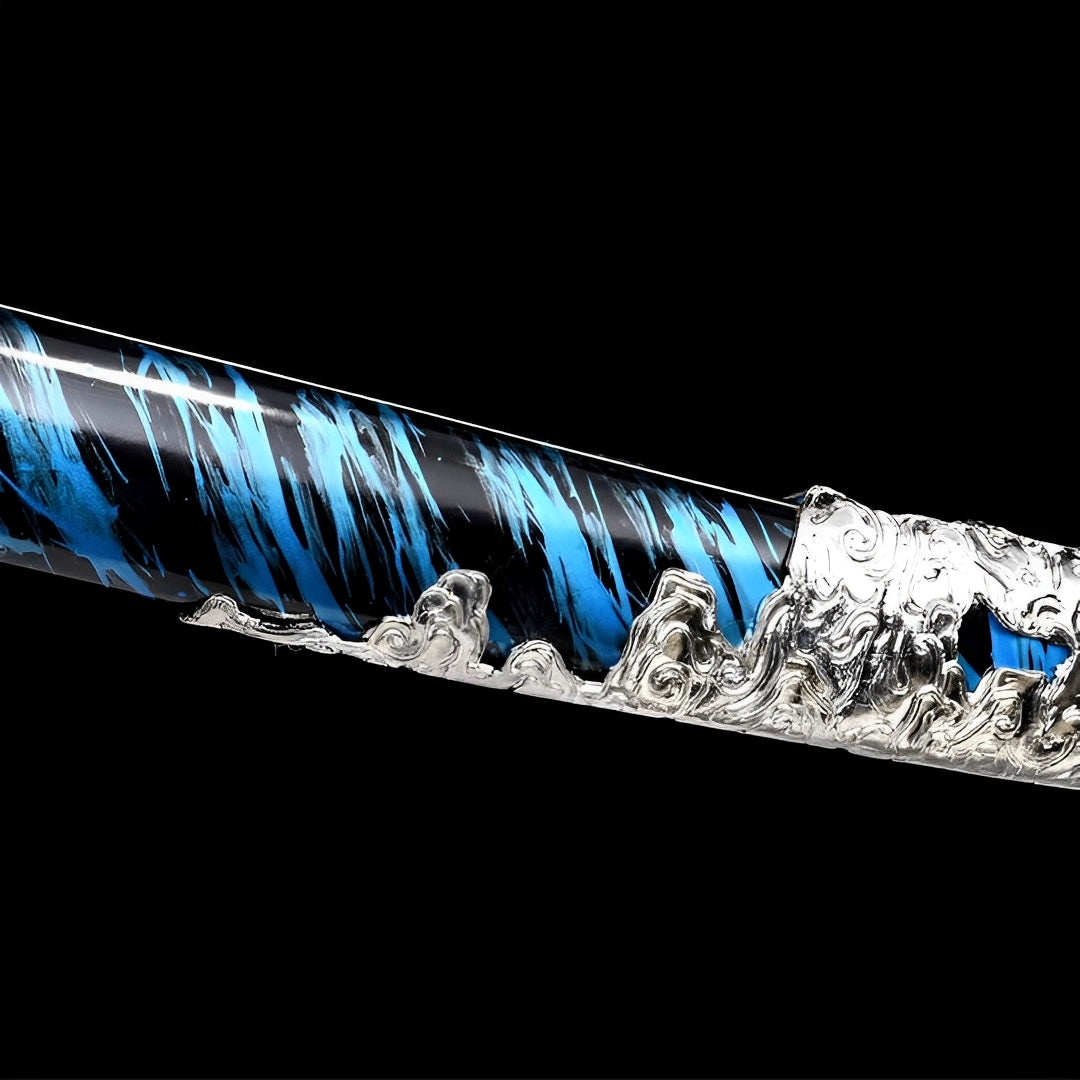
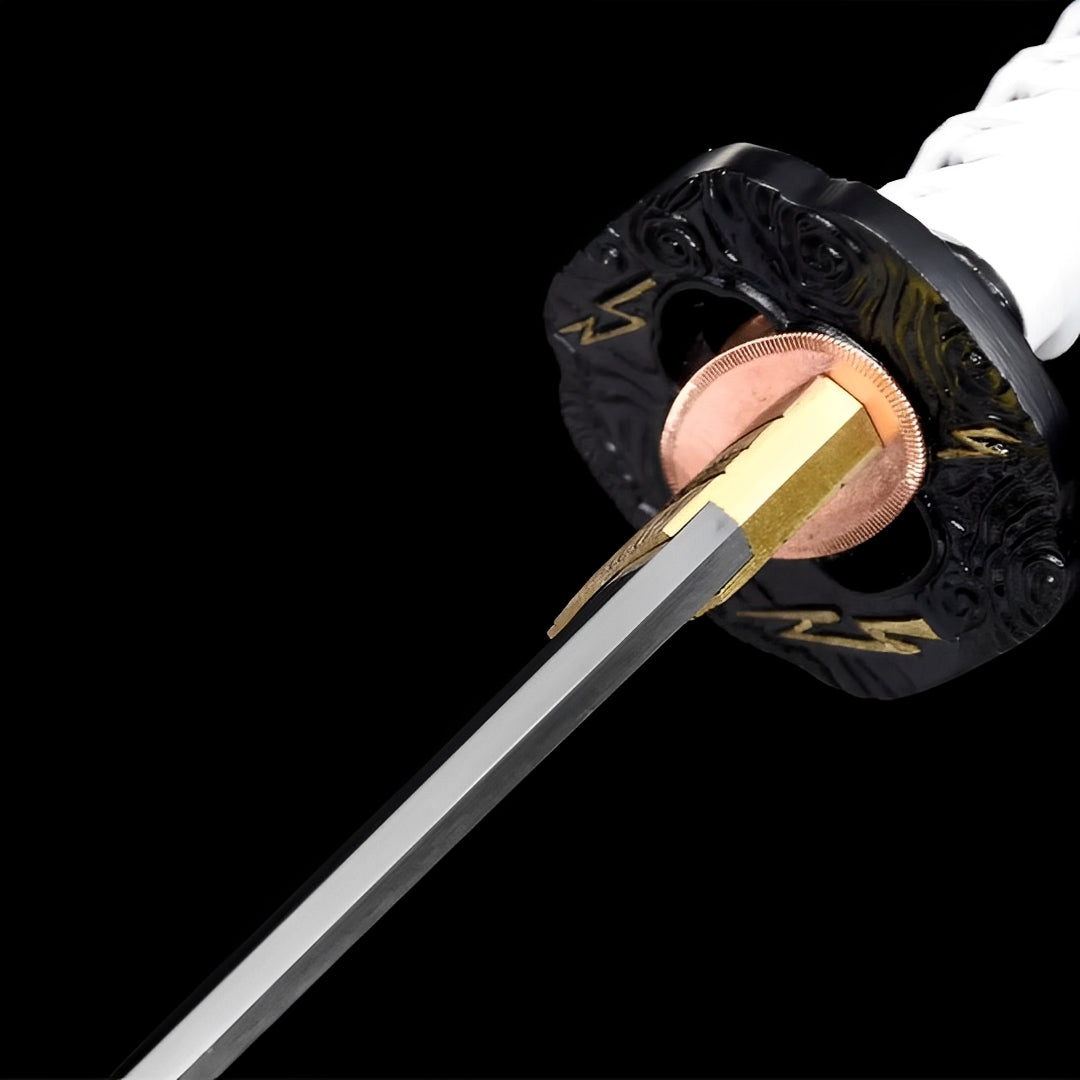
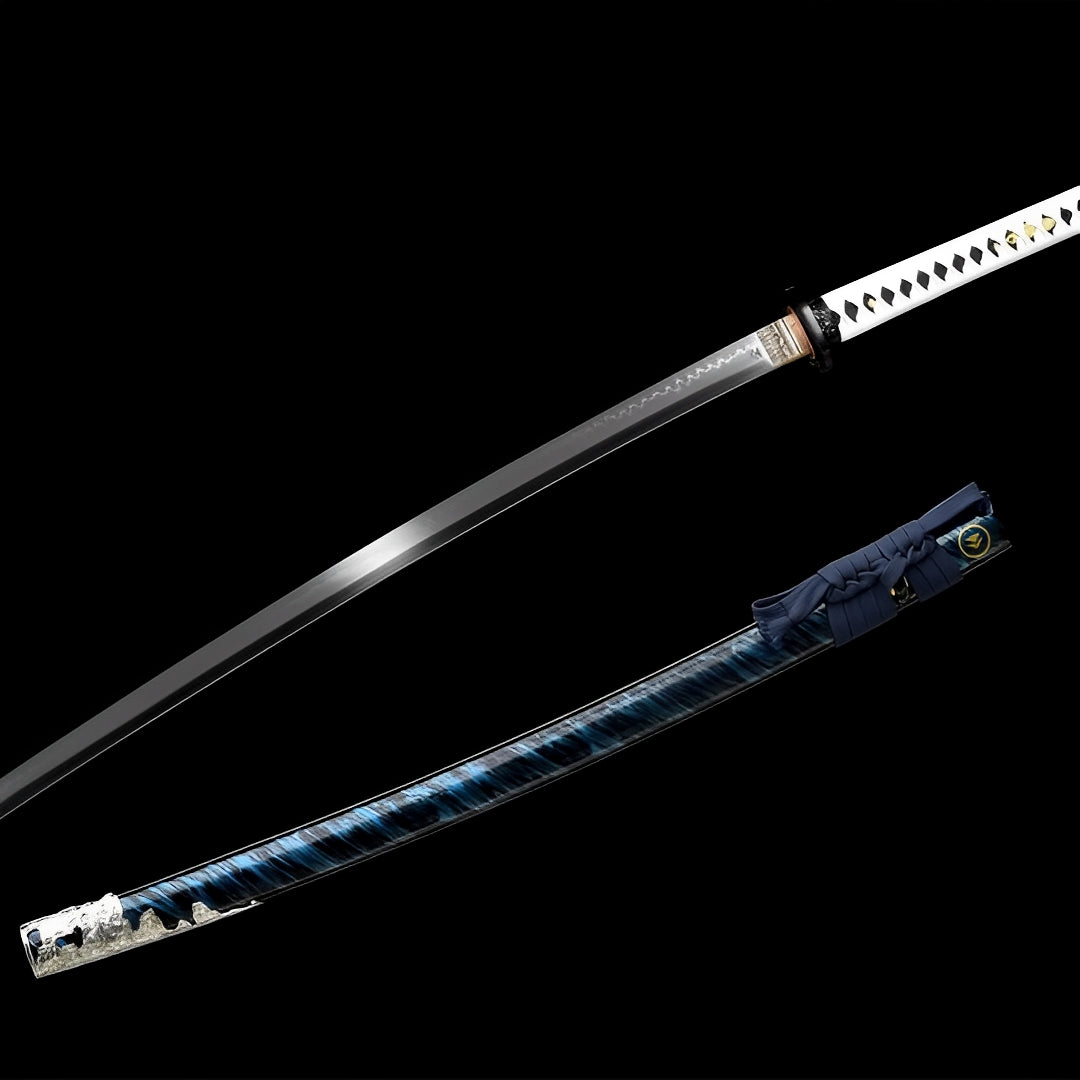
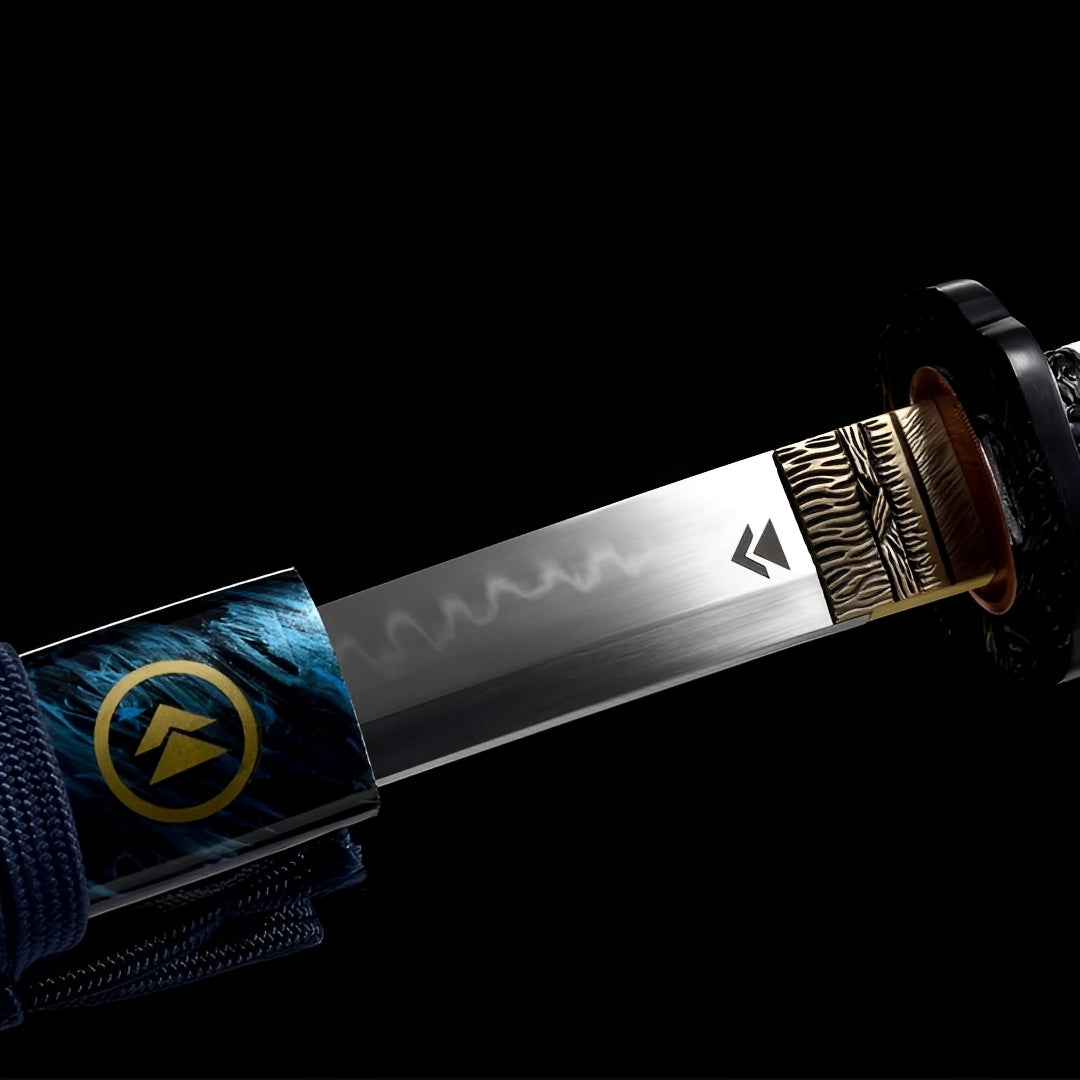
Why choose us
Ships within 48/72h
Forged Blade
Collector Quality
Trusted Globally
Inspired by Japan
Jin Sakai Katana - サカイ
Included with your order



Note: Engraving placement and orientation may vary by blade model (hamon, geometry, and flat area).
Free Shipping over $250
No Bots, No AI
Refund Guaranteed
Free Shipping over $250
No Bots, No AI
Our team is here to help with any questions or concerns.
We’re always happy to assist you — don’t hesitate to reach out.
Why choose us
Ships within 48/72h
Forged Blade
Collector Quality
Trusted Globally
Inspired by Japan

Jin Sakai Katana - サカイ
Specifications
- Hand-crafted
- Full tang in handle
- SHARP
- Blade: T10 steel
- Genuine clay tempered hamon, traditional method
- Genuine Rayskin on the tsuka
- Kissaki: Chu-Kissaki
- Copper tsuba
- Solid WOOD Saya, lacquered finish
- Iron Tsuba
- Overall size: 105cm
- Blade size: 72cm
- Blade width: 3.2cm
- Blade thickness: 0.7cm
- Handle size: 30cm
Jin Sakai Katana - Clan Legacy Honor Blade
Carry ancestral weight with Jin Sakai's Katana, blade bearing Sakai clan's proud insignia. This noble Ghost of Tsushima sword captures the samurai before becoming Ghost - vibrant blue saya adorned with clan mon announcing legitimate authority, traditional patterns honoring generations of Shimura vassals, the steel itself remembering when honor mattered more than survival, when duty meant following code even as Mongols slaughtered everyone obeying those rules. Not weapon of pragmatic shinobi but instrument of last true samurai, asking whether preserving tradition matters when traditions ensure defeat.
Sakai Clan Insignia
The golden mon (family crest) emblazoned on the blue koiguchi immediately establishes this as Jin's blade before Ghost tactics corrupted his samurai purity. That circular emblem with distinctive symbol represents Sakai family's generations serving as Shimura vassals, the hereditary relationship binding Jin to Lord Shimura as surrogate father and feudal lord simultaneously.
This clan katana differs fundamentally from generic Ghost blade representing Jin's moral compromise. That black-and-white sword symbolized the choice between honor and survival; this blue legacy blade represents what he sacrificed achieving that impossible balance. Every Sakai samurai before Jin carried weapons bearing this mon - his father, grandfather, ancestors stretching back centuries. Drawing this blade meant invoking that lineage, accepting their judgment on his actions.
The mon's strategic placement ensures visibility whether sheathed or drawn. Jin couldn't escape his family legacy any more than he could erase the mon from his sword. That persistent reminder of who he was supposed to be versus who circumstances forced him becoming drives the game's entire emotional core. This heritage weapon physically manifests that internal conflict.
Traditional Japanese culture emphasized ie (家 - household/family) over individual identity. Samurai existed as representatives of their clan, their personal desires subordinate to family honor. Jin's Ghost tactics therefore didn't just violate bushido code - they betrayed every Sakai ancestor whose mon this sword bears. That's heavier burden than merely breaking rules.
Collectors recognizing this mon understand: this isn't just Jin's sword but the Sakai clan blade, a weapon that should have passed to Jin's son, continuing the line. But Jin chose saving Tsushima over producing heirs, chose poison and stealth over honorable combat, chose becoming Ghost over remaining samurai. The mon becomes memorial to the family line Jin effectively ended.
Sapphire Authority Aesthetic
The deep sapphire blue saya creates Jin's most distinctive color signature, the vibrant azure announcing Sakai clan's presence across Tsushima's battlefields. Unlike generic blacks or natural woods allowing samurai blending into landscape, this bold blue declares: "I am here, I am Sakai, I fight with honor visible to gods and men."
This ceremonial blade coloration suggests formal occasions - castle meetings, diplomatic missions, ceremonial duels where appearance mattered as much as skill. Jin likely carried this sword during the formal challenges before Mongols demonstrated that honor means nothing to enemies who never learned its language.
The blue specifically evokes ocean surrounding Tsushima - the island's geography defining its fate as Mongol invasion's first target. The Kamikaze divine wind that historically saved Japan never arrived for Tsushima's first invasion, forcing Jin improvising tactics the winds might've rendered unnecessary. The blue becomes reminder of isolation, of being abandoned by mainland Japan, of fighting alone.
Traditional Japanese blue pigments (indigo, woad) required extensive processing and commanded premium prices. A blue-lacquered saya therefore announced wealth, status, resources commanded by successful samurai families. The Sakai could afford this luxury because they served faithfully, accumulating rewards across generations. The blue represents accumulated honor made visible.
Modern gamers recognize this blue as Jin's signature color appearing throughout Ghost of Tsushima's promotional materials, cover art, character select screens. The iconic game blade blue ensures instant recognition even among casual players who might not remember character names but recall that distinctive sapphire samurai.
Tribal Heritage Patterns
The geometric patterns adorning both saya and habaki create visual complexity suggesting cultural layers beyond simple Japanese aesthetics. These angular designs might reference Ainu indigenous patterns, Korean influences from continental trade, or purely decorative choices establishing Sakai clan's unique visual identity.
The habaki's elaborate golden patterns specifically draw attention - concentric bands, geometric shapes, possibly stylized family symbols creating almost hieroglyphic effect. This isn't random decoration but deliberate communication: "This blade comes from family whose history requires visual vocabulary beyond simple mon."
Traditional sword fittings featured family-specific designs allowing instant identification on battlefields. Jin's habaki patterns therefore serve military function - allied samurai recognizing Sakai swordwork even through combat's chaos, enemies learning to fear that particular geometric signature appearing before death.
The culturally layered weapon patterns also remind that Tsushima existed as border region, crossroads where Japanese, Korean, and indigenous Ainu cultures intersected. Jin's eventual adoption of Mongol tactics (using explosives, ignoring dueling etiquette) therefore wasn't completely unprecedented - Tsushima always adapted outside influences even when mainland Japan rejected them.
Close examination reveals incredible detail in these patterns - each line, angle, intersection receiving individual attention from craftsmen understanding that clan heirloom weapons deserve perfection. The patterns should survive scrutiny, rewarding collectors who examine carefully rather than merely glancing.
White Purity Diamond
The pristine white handle with black diamond wrapping creates visual contrast against the vibrant blue saya. This classic combination suggests Jin during the game's opening - pure samurai following bushido code absolutely, his moral clarity as white as his handle, his path as clearly defined as those black diamonds.
The white specifically becomes tragic knowing what comes later. Ghost tactics soil that purity, psychological wounds from employing "dishonorable" methods staining Jin's self-perception even as he saves lives through pragmatism. The white handle represents innocence lost, idealism sacrificed, the man Jin was before war taught him that surviving requires compromising principles.
Traditional white wrapping showed dirt immediately, requiring constant maintenance - appropriate metaphor for bushido code demanding perpetual vigilance, constant self-examination, accepting that any moral lapse shows clearly against pure white standards. Jin's Ghost tactics therefore weren't merely strategic innovations but visible stains on that white ideal.
The moral compass blade white also references Lord Shimura's strict teachings. Shimura demanded perfection, absolute adherence to samurai code, never compromising even when compromise meant survival. That white handle represents Shimura's expectations, standards Jin ultimately couldn't maintain when choosing between honor and Tsushima's salvation.
Essential Ghost Collection
For Ghost of Tsushima collectors, this clan blade represents essential counterpoint to the Ghost sword showing Jin's transformation. Display both together telling complete story - the blue formal blade he carried as samurai, the black tactical weapon he adopted as Ghost. That visual progression charts the game's entire emotional journey.
The vibrant blue photographs spectacularly for cosplay, the color popping dramatically against Jin's armor, the golden mon catching light ensuring visibility in convention photos or outdoor shoots. Unlike subtler blades disappearing in images, this sapphire sword commands attention befitting clan legacy weapon.
Investment considerations favor iconic game designs from critically acclaimed titles. Ghost of Tsushima won multiple awards, became PlayStation's fastest-selling new IP, received film adaptation greenlight - success ensuring lasting cultural relevance. Jin's signature blue sword therefore represents stable long-term collectible from game achieving classic status.
The samurai honor blade particularly appeals to collectors appreciating Ghost of Tsushima's nuanced exploration of honor's meaning. The game never declared Jin right or wrong abandoning bushido - it simply showed impossible choices war forces, letting players decide whether survival justifies dishonor. The sword bearing Sakai mon while Jin employs Ghost tactics embodies that tension perfectly.
Care Instructions: Wipe sapphire saya maintaining its vibrant blue - this clan color demands preservation honoring Sakai ancestors. Polish golden mon and habaki patterns with reverence befitting family heirlooms. Clean white handle carefully, remembering it represents purity Jin struggled maintaining. Display where it reminds you that sometimes hardest choices aren't between right and wrong but between two rights that cannot coexist, that honor sometimes demands sacrifices honor itself would condemn, that being last of your line means no one remains judging whether you chose correctly.
The Sakai served with honor. Jin served with victory. History decides which mattered more.
Legal Disclaimer
By purchasing from Katana Corp, you acknowledge and agree that:
- You are at least 18 years of age (or the age of majority in your jurisdiction).
- You are solely responsible for verifying and complying with all local laws and import regulations before placing an order.
- Some countries prohibit the importation of swords entirely. Katana Corp is not responsible for orders delayed, seized, or refused by customs authorities.
- All katanas and related products are sold strictly as decorative and display items. They are not intended or certified for combat use.
- Depending on the jurisdiction, swords may legally be considered bladed weapons, subject to specific restrictions or prohibitions.
- Katana Corp disclaims all liability for any injury, damage, or legal consequences resulting from misuse, abuse, or unlawful use of its products.
For full details, please refer to our Terms of Service.
Care & Maintenance
To maintain your katana's appearance and performance over time, we recommend:
- Regularly wiping the blade with a soft cloth to remove fingerprints and moisture.
- Applying a light coat of choji oil to prevent rust (for carbon steel blades).
- Storing the sword in a dry place, preferably inside its saya.
- Avoiding direct contact with hard surfaces to preserve sharpness and finish.
For more care tips, check our full maintenance guide in the FAQ section.
Behind the Blade
Every katana we offer carries the essence of centuries-old craftsmanship.
More than just a weapon, the katana symbolizes discipline, honor, and mastery.
Our artisans draw inspiration from traditional forging methods to ensure each blade reflects the spirit of the samurai — strength, precision, and soul.
Owning one is not just about aesthetics — it’s about carrying a piece of that legacy.
User Experience
This katana is designed to offer a perfect balance between blade and handle.
Its ergonomic tsuka (handle) allows a secure two-handed grip, while the weight distribution ensures smooth, fluid movement.
Whether for training, display or cutting practice, handling feels natural and precise.

The Art of Traditional Forging
Each katana we craft is born from centuries of samurai tradition.
Our master smiths shape every blade by hand, folding the steel to achieve unmatched strength, flexibility, and beauty.
This time-honored process is not just about creating a weapon? it’s about preserving a legacy of discipline, honor, and artistry.
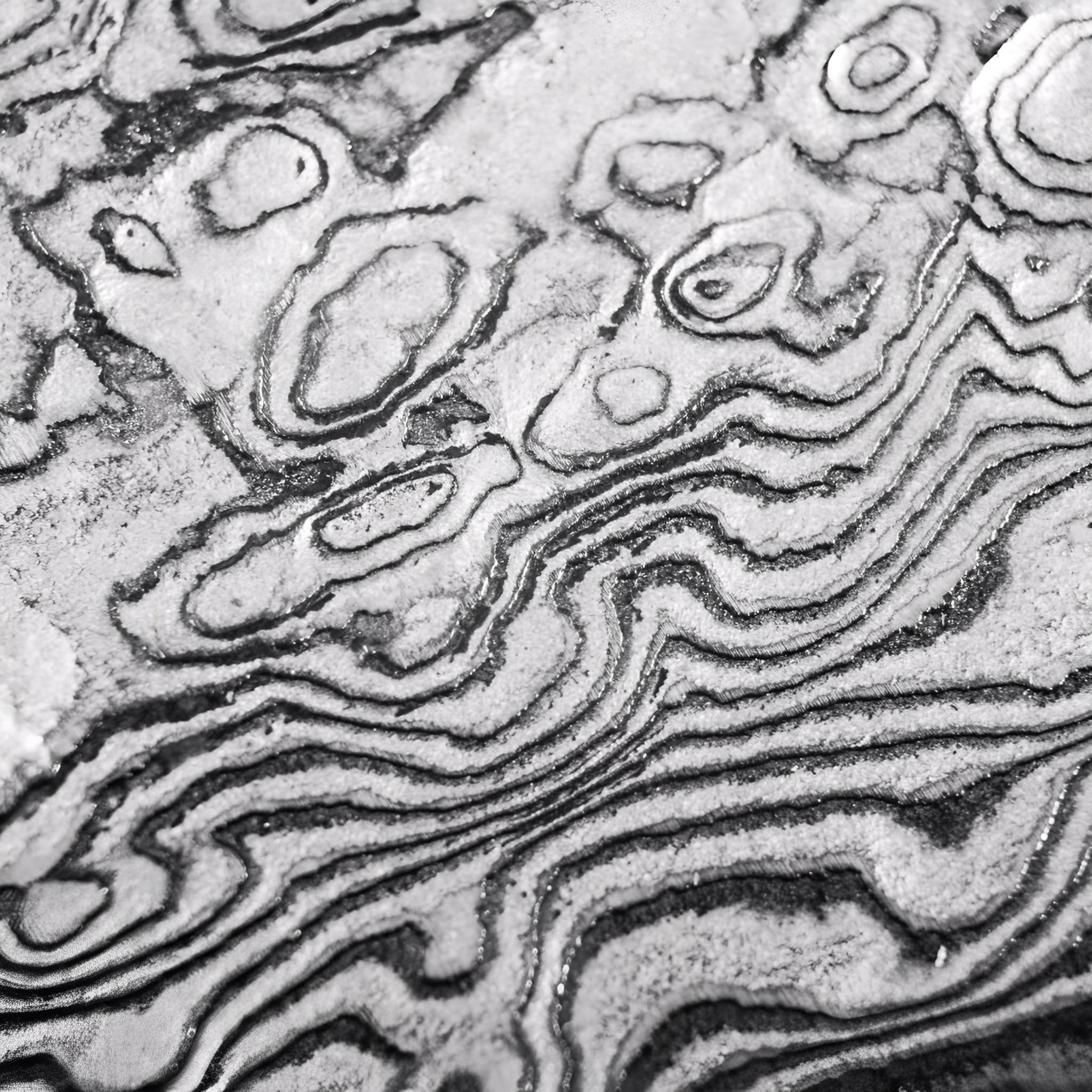
Materials Chosen Without Compromise
We select only the highest-grade steels and authentic fittings to ensure every katana is both a masterpiece and a reliable companion.
From the flawless hamon line to the perfectly balanced tang, each detail is carefully inspected to meet the highest standards of performance and aesthetics.
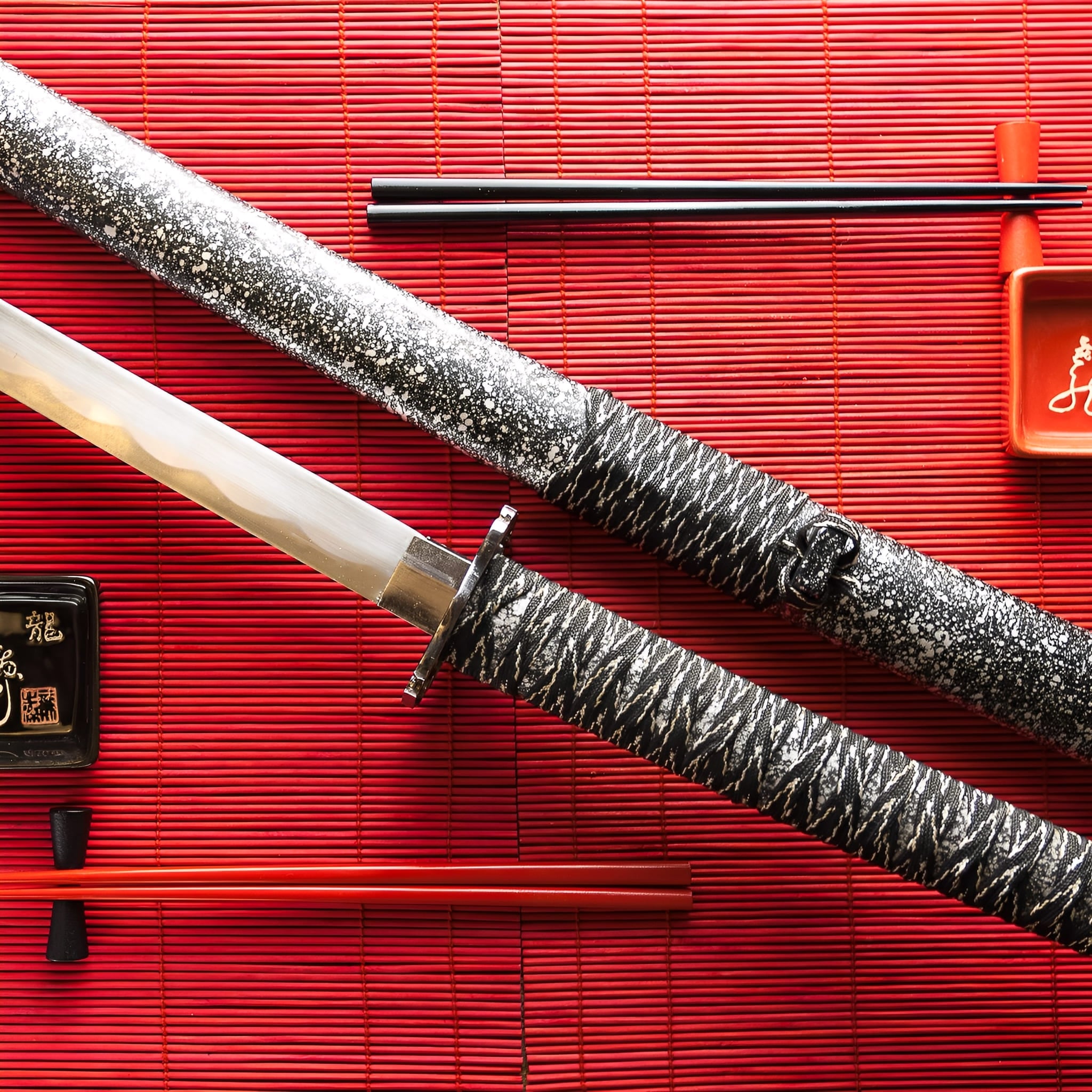
More Than a Sword, A Lifelong Legacy
Owning a handmade katana is an experience that goes beyond the blade itself. It’s holding history, tradition, and craftsmanship in your hands.
Whether displayed as a work of art or wielded with precision, your katana will stand as a symbol of timeless skill and dedication for generations to come.
-
Key Destinations
United States: 5–7 days
Canada: 5–7 days
Australia: 6–9 days
Denmark: 4–6 days
Netherlands: 3–5 days
Sweden: 4–6 days
Switzerland: 3–5 days
Finland: 5–7 days
Singapore: 6–8 days -
Central European Partners
France: 2–3 days
Germany: 3–5 days
Spain: 4–6 days
Italy: 4–6 days
Belgium: 3–5 days
Austria: 4–6 days
Ireland: 4–6 days
Poland: 4–6 days
Portugal: 4–6 days -
Extended EU Network
Czechia: 4–6 days
Hungary: 4–6 days
Slovakia: 4–6 days
Slovenia: 5–7 days
Romania: 5–7 days
Bulgaria: 5–7 days
Croatia: 5–7 days
Serbia: 5–7 days
Estonia: 5–7 days
Latvia: 5–7 days
Lithuania: 5–7 days
Luxembourg: 3–5 days
Greece: 5–8 days -
FAQ’s
Visit our FAQs page to find answers to common questions.